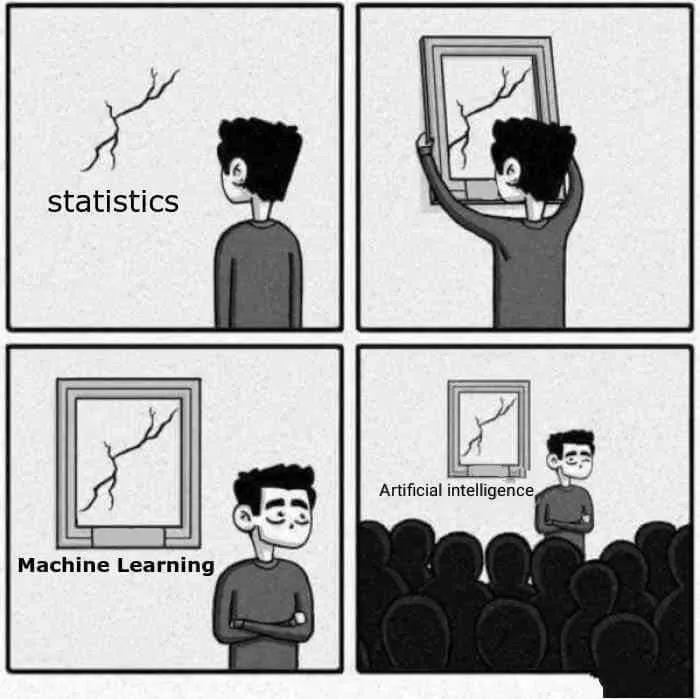This post was written by Camp Developer Relations Engineer Charlene Nicer and was first published Feb 7, 2025 on Substack.
Is AI breaking IP, or are we just looking the other way?
I admit—I misunderstood what Intellectual Property (IP) really is.
And I’m not alone.
When we think of IP, what comes to mind?
-
An invention like the light bulb
-
A scientific discovery like a solar reactor
-
A recipe for beer, like Heineken’s
-
An ethical method for harvesting caviar
-
A Taylor Swift lyric
-
A logo like Apple’s
-
A name and branding like the Kardashians
-
A viral tweet you posted
IP includes patents, copyrights, trademarks, and trade secrets. Formally, it refers to the rights granted to creations of the mind, giving creators exclusive control over their work—allowing them to dictate how it's used and profit from it.

Two Key Aspects of IP
-
An institution must recognize that the work is original and has been documented in some tangible form.
-
IP grants the right to monetize an idea and prevent others from copying it.
The AI Conundrum
But what happens to IP in the evolving world of AI? AI models train on vast amounts of data—often without clear ownership boundaries. Should AI-generated works be considered unique? And more importantly, who owns them? The user who provided the prompt? The AI developers? Or do we need a new category altogether?
Truthfully, even before AI, the traditional IP system had flaws:
-
Too Many Rules: Excessive legal protections can stifle innovation.
-
Unfair Access: Only those with resources can afford to protect their ideas.
-
Artistic Restrictions: Strict laws can limit creativity and cultural exchange.
-
Corporate Dominance: Large companies can monopolize markets, raising costs.
-
Global Disparities: Different countries enforce IP laws differently, causing confusion.
-
Excessive Longevity: IP protections last too long, preventing new generations from building on past ideas.
-
Ethical Concerns: The idea of owning parts of nature or genetic material is morally questionable.
Now, with AI generating content at scale, traditional IP protections may become obsolete. Who should be held responsible for copyright infringement—the person who prompted the AI or the AI model itself?

A Blockchain-Based Solution
If you know me, you know I’d bring up blockchain. And for good reason. Blockchain can enhance IP management by creating a tamper-proof system for tracking provenance.
Creators can timestamp and register their work, establishing clear proof of ownership and priority. This reduces monopolies and enhances global consistency in IP enforcement.
Smart contracts can automate licensing and royalty payments, ensuring fair compensation and transparency. Blockchain also enables collaborative models, allowing contributions to shared works to be tracked and recognized.
By providing immutable provenance records, blockchain can help resolve disputes more efficiently. However, solving the IP dilemma requires more than just technology. Institutions must recognize and adopt these solutions, and people need to trust them.
Blockchain offers a working model, but the challenge goes far beyond just implementing a system—it requires a fundamental shift in how we perceive ownership in the digital age.

Why Protecting IP Matters: A Billion-Dollar Industry at Risk
Intellectual Property isn’t just about ownership—it’s a multi-billion-dollar engine of innovation and trade. According to Statistics Canada, businesses in the country generated a record $8.9 billion from IP in 2021, a 36.6% jump from the previous year. At the same time, payments for IP usage rose 34.3% to $2.2 billion, highlighting the growing value of intangible assets.
Since 2017, IP receipts have more than doubled, with the biggest surge during the pandemic. That year, $6.6 billion—nearly 75% of all IP revenue—came from foreign markets, more than double the $2.7 billion in 2017. Domestic receipts grew too, reaching $2.2 billion in 2021, though international demand continues to drive the industry.
This growth proves that strong IP protections fuel economic success. Without clear rights, companies risk losing revenue, investment, and innovation to unchecked AI-generated content and weak enforcement. Protecting IP isn’t just about fairness—it’s about securing the future of a trillion-dollar global economy.
Conclusion: The Urgent Need to Rethink IP in the AI Era
Intellectual Property has long been the foundation of innovation, fueling industries and global trade. But as AI reshapes creativity and technology, traditional IP protections are falling behind. Who owns AI-generated content? Who is responsible for infringement? These questions challenge the very essence of IP law.
Ignoring them isn’t an option. If ownership rights collapse in the wake of AI’s rise, creators, businesses, and economies will bear the cost. Innovation thrives when ideas are protected, but when AI blurs the lines of authorship, those protections become meaningless.
Blockchain offers a way to restore transparency and enforce ownership, but technology alone isn’t enough. Real change requires legal adaptation, institutional recognition, and trust in new systems.
The future of IP is uncertain, but one thing is clear: if we don’t act now, we risk losing control over the very ideas that drive progress. Whether through regulation, innovation, or both, we must redefine ownership before AI rewrites the rules for us.